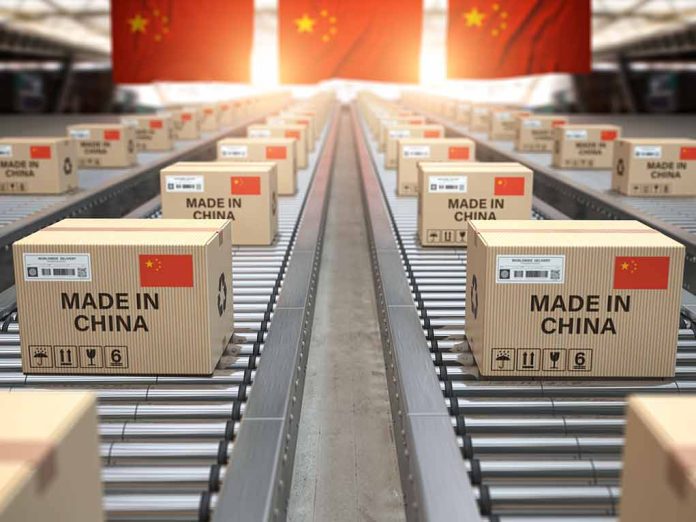
In the heart of Shenzhen, the electronic powerhouse of Huaqiangbei faces a significant downturn due to the impact of Trump-era tariffs on China’s chip market.
Key Takeaways
- Huaqiangbei’s electronic market is suffering due to high U.S. tariffs on Chinese semiconductors.
- Chip orders are dwindling, coupled with price hikes up to 40% for Intel and AMD products.
- The cumulative tariffs reach 156% on Chinese goods, stirring financial viability concerns among distributors.
- Potential adaptation through subsidies and digital marketplaces is a strategy under consideration in China.
Current Market Overview
Huaqiangbei, Shenzhen’s bustling electronics district, is witnessing severe repercussions from the tariffs imposed during the Trump administration. The implementation of exorbitant U.S. tariffs has pushed chip prices significantly higher, leading to a notable decline in orders and market activity, despite the outer buzz of the streets.
The chip sector within Huaqiangbei has particularly felt the crunch. Reports from distributors reveal that since the tariffs rose, orders have dropped dramatically. One anonymous distributor disclosed, “Orders have plunged since last week.”
Impacts and Reactions
The tariffs not only affect semiconductor traders in Shenzhen but also cast a shadow over the broader electronics market, including industries like e-commerce. A 145% tariff has notably impacted trade with American consumers, stirring fears of bankruptcies among Chinese micro-retailers who are reliant on U.S. markets.
The situation points to a potential restructuring within the industry. Distributors, now faced with unsustainable operating conditions, are beginning to voice concerns about the very viability of continuing business as usual.
A tiny company just made a $2,000 smartphone almost entirely in the US. They solder chips by hand in California, build their own boards, even write the OS.
it's slow, expensive, and kinda clunky.
but it shows this: if China tariffs stick, America can rebuild tech manufacturing.… pic.twitter.com/ndhQqGzRmd
— Shashank | 𝔽rAI (@0xshai) April 11, 2025
Strategies to Counteract Economic Strain
The looming crisis in Huaqiangbei pushes Chinese producers to think creatively about how to offset these setbacks. Some analysts propose that China could leverage its cost advantages and anticipate government support through subsidies.
Furthermore, adapting to new digital marketplaces could serve as an alternative route for sales amidst these challenging circumstances. With strategic adjustments, some industry leaders remain hopeful that they can navigate through the turbulent trade environment and gradually rebuild their market standing.
Sources:
- Hit by Trump’s tariffs, China’s chip traders decry ‘no point in working’ as orders tank
- Trump tariffs live updates: Trump touts trade talk progress, says ‘going to make a deal’ with China
- China Chip Traders Grumble that Trump Tariffs Sent Orders Plummeting



